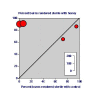Systematic review of the use of honey as a wound dressing
- PMID: 11405898
- PMCID: PMC32305
- DOI: 10.1186/1472-6882-1-2
Systematic review of the use of honey as a wound dressing
Abstract
Objective: To investigate topical honey in superficial burns and wounds though a systematic review of randomised controlled trials.
Data sources: Cochrane Library, MEDLINE, EMBASE, PubMed, reference lists and databases were used to seek randomised controlled trials. Seven randomised trials involved superficial burns, partial thickness burns, moderate to severe burns that included full thickness injury, and infected postoperative wounds.
Review methods: Studies were randomised trials using honey, published papers, with a comparator. Main outcomes were relative benefit and number-needed-to-treat to prevent an outcome relating to wound healing time or infection rate.
Results: One study in infected postoperative wounds compared honey with antiseptics plus systemic antibiotics. The number needed to treat with honey for good wound healing compared with antiseptic was 2.9 (95% confidence interval 1.7 to 9.7). Five studies in patients with partial thickness or superficial burns involved less than 40% of the body surface. Comparators were polyurethane film, amniotic membrane, potato peel and silver sulphadiazine. The number needed to treat for seven days with honey to produce one patient with a healed burn was 2.6 (2.1 to 3.4) compared with any other treatment and 2.7 (2.0 to 4.1) compared with potato and amniotic membrane. For some or all outcomes honey was superior to all these treatments. Time for healing was significantly shorter for honey than all these treatments. The quality of studies was low.
Conclusion: Confidence in a conclusion that honey is a useful treatment for superficial wounds or burns is low. There is biological plausibility.
Figures


References
-
- Lawrence CJ. A Century after Gamgee. Burns. 1987;13:77–79. - PubMed
-
- Queen D, Evans JH, Gaylor JDS, Courtney JM, Reid WH. Burn wound dressings - a review. Burns. 1987;13:218–228. - PubMed
-
- Campbell F, Seers K. Dressing and topical agents for burns. The Cochrane Library, Issue 3, 2000. Oxford: Update Software.
-
- Bradley M, Cullum N, Nelson EA, Petticrew M, Sheldon T, Torgerson D. Systematic reviews of wound care management: (2) Dressings and topical agents used in the healing of chronic wounds. Health Technol Assessment. 1999;3(17 Pt2) - PubMed
Publication types
MeSH terms
Substances
LinkOut - more resources
Full Text Sources
Medical

